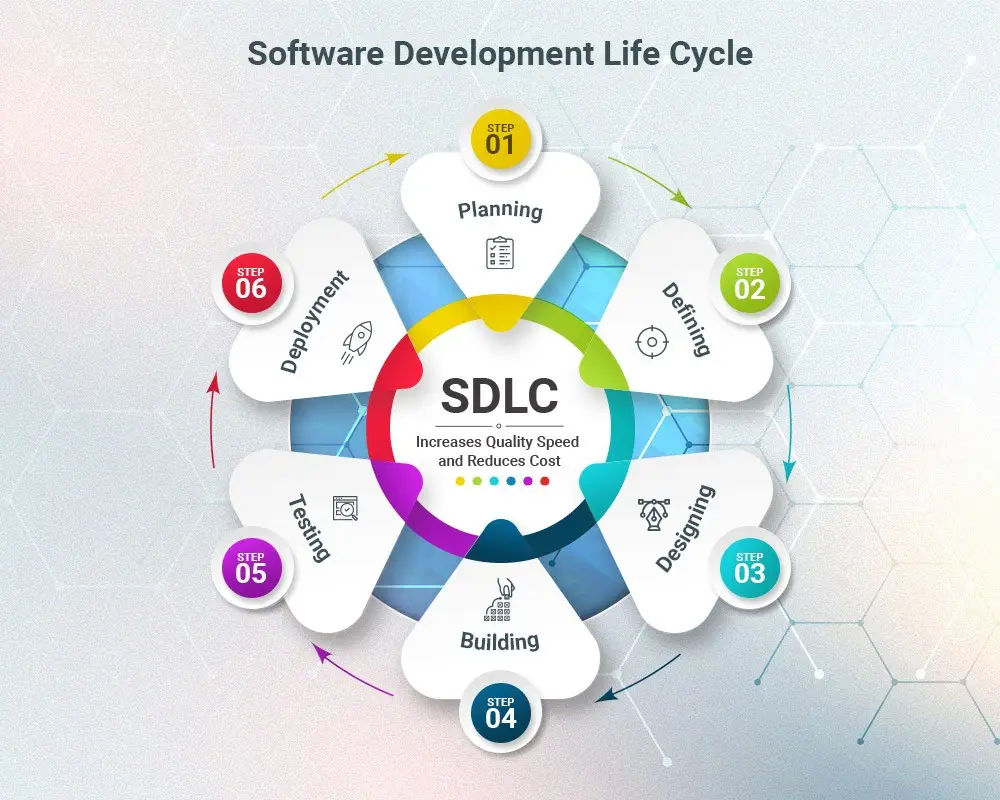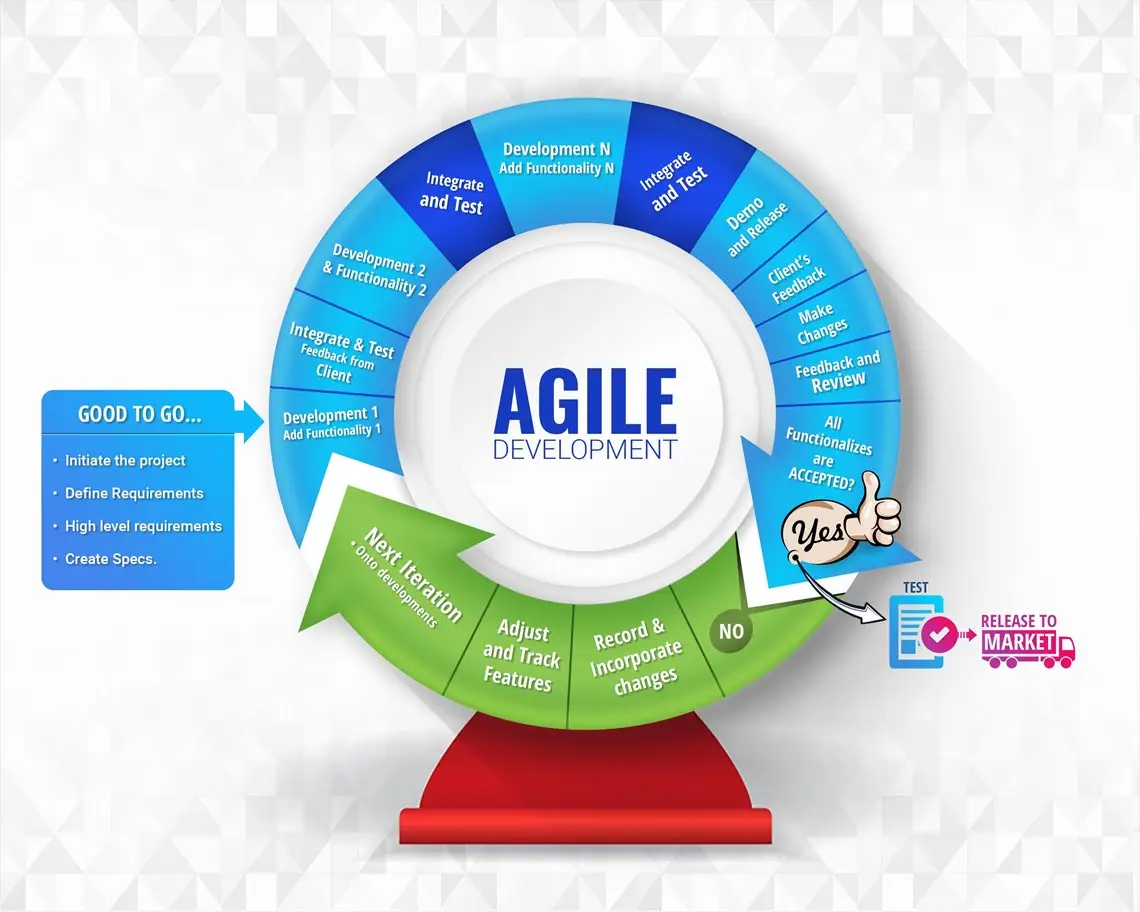SDLC as Software Development Life Cycle, Increases Quality Speed and Reduces Cost:
The Farber Consulting Group, Inc. wants to help you with custom software development tailored to meet the particular needs of your brand. You can save time and money with custom software development once you compare the benefits that you receive to the downsides of off-the-shelf software. That generic software isn’t geared toward your business practices, so any benefits it has when it comes to productivity are incidental rather than calculated.
A custom application can help you to take the procedures that your company is currently performing manually and automate as many of those as possible. You may be able to find existing software that does some of what you want, but custom software really gives you a competitive advantage. With the help of a remote DBA (database administrator), custom applications can provide speedy results and help your company to thrive (we will discuss this more later).
In order to reveal how we create efficient custom software for any potential client, we would like to explain the steps that help us to get there and save you time and money in the process.
What Is the SDLC?
You want the best quality software, but you also don’t want to waste time. That is the purpose of the software development life cycle. How can you get from the idea to a fully functional program in the least amount of time? You have to work within a series of steps that produce the best quality applications in the least amount of time. Of course, for the best results, the steps need to include testing the software before release so that you don’t end up having to fix bugs on the fly. Also, while there are a few different viewpoints as to the best SDLC model, they all follow a basic pattern to get your company from point A to point B in the most efficient way.

How Does the Software Development Life Cycle Work?
The function of the SDLC is to save time and money during the process of developing custom software while also ensuring top quality. Really, most software projects fall victim to the same series of mistakes. So the process is put in place to help developers avoid those classic errors. This allows the design team to reach two goals that are usually at odds with one another: quality and speed/cost.
The SDLC helps to define the software requirements in advance. This sets in motion a process that allows the application to be designed, developed, tested, and deployed with minimal interruptions. By following the six steps of the software development life cycle, you can eliminate the redundancies that waste time and money while also creating the best possible software. Testing is a crucial part of the SDLC. The more you test during the development process and before the actual software release, the fewer things you should have to go back and fix later. So with all this in mind, let’s go through the six stages of the SDLC together.
Stage 1: Coming Up with the Requirements
Your requirements are basically the goals of the software. You need to look at existing business processes and determine what you want to automate. This can be done through a series of questions that evaluate the current situation of the company.
By the end of this stage, you should have a broad idea of the scope of the process. You should also identify any risks and take these into consideration. As a result, this is one of the longer stages of the process. In fact, the more time you spend in the analysis and requirement phase, the faster the rest of the project should be able to proceed.
Stage 2: Evaluating the Feasibility of the Project
Now you have to see if the requirements can reasonably be met by custom software development. For example, is the project economically viable? Do you even have the money to take on the venture at this time? You have to consider the requirements first so you have a better idea of what the project will cost. Other factors include the legality of what you want the application to accomplish, whether it is possible to automate the functions that you want to be performed by the software, and whether there is a reasonable time frame for the completion of the project.
Stage 3: System Design
Once executives determine the feasibility and give approval for the project to continue, it is time for the custom software development team to get to work. Before the software coding starts, there needs to be some technical documentation that outlines how the finished project will function. These documents will include the architecture of the program, how it will be configured, the structure of the data, and a model for procuring resources.
In the end, you may get to see a prototype of how some features of the application will work. There could also be pseudocode, reports, diagrams, and minimal viable products in order to show what the functionality of the application will look like when completed. Low-level design also gives you the chance to observe the user interface and even see some early errors that need to be corrected.
Stage 4: Developing the Application
Now it is time to develop the software by coding the full program. Several individuals may be responsible for their own part of the final project, with the system coming together as a whole when the team collaborates together. During the coding process, the team may reevaluate some of the decisions made in the requirements and design phases in order to strategize the best final product. However, any changes should be recommendations that are subject to feedback before implementation.
Ultimately, this is the most time-consuming stage of the software development life cycle. However, all of the previous stages help to minimize the amount of time spent in the actual software development stage.
Stage 5: Performance Testing and Fixes
Before anyone sees the finished product, it has to go through a series of tests to ensure that it performs optimally. When mistakes or issues are discovered, this is the time to work out the bugs.
The testers need to have specific instructions, so they know what they are testing and the functions the system should be able to perform. Once you determine the specific tests that should be performed, then you need a means of reporting errors and issues.
The testers must communicate well with the development team so that any flaws are fixed. You may have to repeat this stage several times after fixes are implemented for errors in the previous tests.
Stage 6: The Product Release
Now it is time for the client to begin using the software. Of course, once the users begin to work with the application in a real environment, there may still be a need for minor updates. However, most of this should have been caught and corrected in the testing state.
To ensure that the users are getting the most from the software, proper installation, documentation, and training are musts. Of course, there is also the matter of transferring ownership of the software and licensing it properly.
Traditional Waterfall SDLC Versus Modern Agile SDLC:
The life cycle we just described is the more traditional means of developing software, like Waterfall. In modern times, some new methodologies have emerged, such as Agile. These new methods involve more flexibility and adaptability throughout the process. It is based on feedback throughout the SDLC.
The phases overlap one another, so you get to the later phases quicker. These are called incremental short sprints. When it comes to modern development, from the time the first module is complete, we let the client test it. This way, you get to provide immediate feedback without waiting for the entire SDLC to conclude.
Here are some of the unique steps and benefits when it comes to Agile type of SDLC:
- Short sprints – the project is developed in short but meaningful increments.
- The strategy focuses on adaptability and flexibility.
- Feedback from the client can be obtained after each sprint, giving you more creative control.
- The scope can change as the project evolves
- Overlapping phases include everything from planning and requirements to design and development.
- The process becomes more collaborative, leading to greater client satisfaction.
- Team members can be responsible for different tasks.
- The whole team focuses on the complete project instead of one phase.
- Better for mitigating risks.
- Not as dependent on tech, processes, or individual team members.

Conclusions for the SDLC:
The mindset is based on greater collaboration with the client, getting input throughout instead of just at the beginning and at set points within the SDLC. It also allows all team members to focus on the project from beginning to end, rather than dividing up the various stages. These methods are better when you are dealing with shorter projects that involve a higher degree of risk.
In the end, the methodology used depends on what is best for the client and may even change from one project to another depending on the scope and degree of risk involved. While some projects allow the SDLC to take on the six distinct phases discussed in this article, many projects will see a blurring of the lines between phases with stages overlapping or even being performed at the same time in parallel to one another.
What are some of the benefits of these modern and less rigid methods of software development? When development, testing, and deployment processes are performed continuously, bugs in the software can be identified earlier in the life cycle, and the client has more opportunities to see the functionality of the software and suggest changes that meet their business model better. This results in great customer satisfaction because you don’t end up having to live with something that simply can’t be fixed because it is so late in the development life cycle.
Your Source for the Best Custom Software Development and SQL Consulting Services:
The Farber Consulting Group, Inc. has perfected our SDLC to help provide clients with quick and affordable custom software that meets and exceeds expectations. One of the ways we do this is by combining our custom software development with our SQL consulting services. This allows you to have a streamlined database to support your new custom applications.
Custom software development is a long-term investment. It is easy to add features to a custom application, whereas with a generic program, you are limited to what the original designer chooses. Since you own the intellectual property of a custom application, and we still have the original code, all it takes is a phone call, and our team can get right on adding the new features you require.
Some of the technologies that we use:
- Alpha AnyWhere Development
- Dot Net Development.
- My SQL Database.
- MS SQL database engine.
- Web Scraping Development while using dot net.
- Convert MS Access To Web-Based Application.
- Optimize Your Database.
- Maintain Visual FoxPro Applications
Give us a call today at 732.536.4765 to or Contact Us get your project started in the requirements stage!


Comments